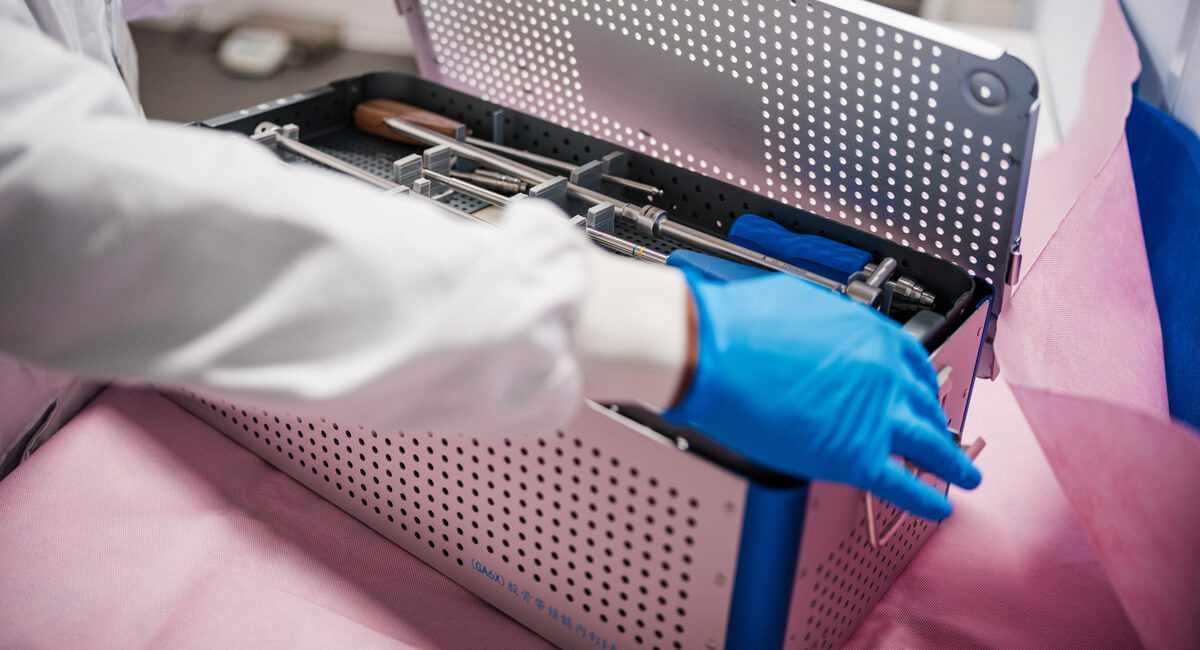Medical Device Sterilisation: Everything You Need to Know
Article Summary
Medical device sterilisation ensures patient safety by eliminating microorganisms. Manufacturers must rigorously validate sterilisation methods based on device type. Validation follows standards like ISO 17665 and proves consistent Sterility Assurance Levels (SAL). Clear Instructions for Use (IFU) and proper validation reduce infection risks and ensure regulatory compliance.Article Contents
How Can Medical Device Manufacturers Validate Sterilisation?
In the world of medical devices, the term “sterile” represents a crucial claim: that a medical device is free from viable microorganisms. This guarantee is essential for ensuring patient safety during critical procedures.
However, medical device sterilisation is not simply a “set it and forget it” process. Achieving and maintaining sterility requires a robust series of actions and operations that must be meticulously validated and consistently executed to ensure the effectiveness of sterilisation methods and to reduce the risk of hospital-acquired infections.
During a medical device sterilisation process, a sterilising agent, whether it is a physical or a chemical entity, or a combination of both, is employed to achieve sufficient microbicidal activity under defined conditions, ensuring sterility.
Which Terminal Sterilisation Methods Are Required in IFUs?
There isn’t a single “best” method for medical device sterilisation: the right choice depends on the medical device, its materials, and its intended use.
For reusable medical devices, manufacturers must provide validated sterilisation instructions in the Instructions for Use (IFU), in accordance with guidance from the Medical Device Regulation (MDR), and the ISO 17664 and ISO 17665 standards. Some common sterilisation techniques include:
- Steam Sterilisation (Autoclaving): the preferred method for sterilising Class Ir reusable medical devices that can tolerate heat and moisture utilises saturated steam under pressure. This approach is effective and non-toxic but is unsuitable for heat-sensitive medical devices and materials such as certain plastics. This method offers superior penetration, especially in porous loads and lumened instruments, compared to hydrogen peroxide sterilisation.
- Hydrogen Peroxide Sterilisation: low-temperature hydrogen peroxide sterilisation is commonly used for heat- and moisture-sensitive medical devices. Systems such as the STERRAD and STERIS V-PRO sterilisers utilise vaporised hydrogen peroxide to achieve effective microbial inactivation with short cycle times and minimal residue. These systems are valued for their material compatibility and efficiency. However, they have limited penetration in long, narrow lumens or absorbent materials, so careful load configuration and validation are essential to ensure consistent sterilisation outcomes.
- Dry Heat Sterilisation: this method requires high temperatures and prolonged exposure times, which limits its compatibility with various materials. It is effective for sterilising powders, oils, and other substances that can withstand high heat. However, it is not recommended for Class Ir reusable medical devices, as the extreme temperatures may degrade or damage common device materials, compromise their functionality, and shorten the lifespan of the instruments.

Do Non-Critical Medical Devices Need Sterilisation? What Reprocessing Guidelines Apply?
Not all medical devices require terminal sterilisation or high-level thermal disinfection. For non-critical medical devices – those that come into contact only with intact skin – routine cleaning followed by low or intermediate-level disinfection is often sufficient between patient uses. In some instances, thorough cleaning alone may be adequate to ensure the device is safe for reuse.
The key is to evaluate the device’s purpose and associated risk level to determine the appropriate method of reprocessing.
What Is a Sterility Assurance Level (SAL) and Why Does It Matter in Medical Device Sterilisation?
Prior to medical device sterilisation validation, an appropriate SAL target must be identified, which quantifies the probability of a non-sterile unit within a sterilised batch.
Sterilisation validation methods are either based on microbiological inactivation or measurement of physical parameters.
Microbiological inactivation: three methods are commonly used: bioburden-based, combined bioburden/biological indicator, and overkill. Bioburden-based methods require knowledge of the product’s microbial load. The combined method enhances reliability with biological indicators. The overkill method uses a conservative cycle with reference microorganisms and is not dependent on bioburden. Medical device sterilisation method selection ensures the chosen SAL validation approach is scientifically sound and regulatory compliant.
Measurement of physical parameters: validation processes using physical parameters must be based on structured performance tests to ensure that defined criteria are consistently met. Each test verifies whether specific performance requirements are achieved, guaranteeing the reliable delivery of the intended Sterility Assurance Level (SAL).
How to Validate Medical Device Sterilisation for SAL and Compliance?
The medical device sterilisation process requires thorough validation according to guidance from either ANSI/AAMI ST79: 2017/(R)2022 or ISO 17665:2024. Validation is a documented procedure for obtaining, recording, and interpreting results to prove that the sterilisation process is “fit for use” in a clinical environment. This enables manufacturers to prove that the sterilisation process in their IFU consistently produces a Sterility Assurance Level (SAL) that meets predetermined specifications.
Get It Done, With Certainty.
Contact us about your testing requirements, we aim to respond the same day.
Get resources & industry updates direct to your inbox
We’ll email you 1-2 times a week at the maximum and never share your information


